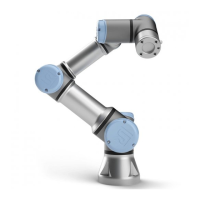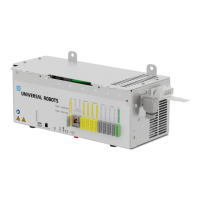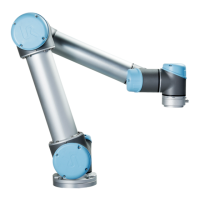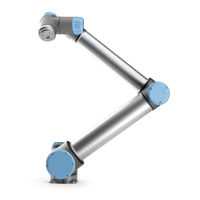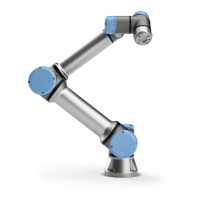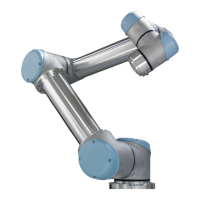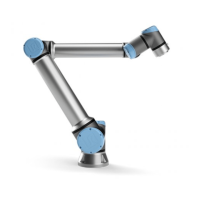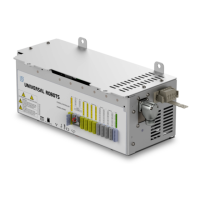10.4 Tolerances
If no errors exist and attempting to navigate away, a different dialog appears with the following
options:
1. Apply changes and restart the system. This will apply the safety configuration modifications
to the system and restart. Note: This does not imply that any changes have been saved; shut-
down of the robot at this point will lose all changes to the robot installation including the
Safety configuration.
2. Revert back to the previously applied safety configuration. This will disregard all changes and
allow you to continue to the desired selected destination.
10.4 Tolerances
The Robot Arm uses built-in tolerances that prevent safety violations. A safety tolerance is the
difference between a safety limit and a maximum operational value. For example, the general
speed tolerance is −150mm/s. This means that if the user configures a 250mm/s speed limit, then
the maximum operational speed will be 250 − 150 = 100mm/s. Safety tolerances prevent safety
violations while allowing for fluctuations in program behavior. For example, when handling a
heavy payload, there may be situations where the Robot Arm needs to briefly operate above the
normal maximum operational speed to follow a programmed trajectory. An example of such a
situation is shown in figure 10.1.
WARNING:
A risk assessment is always required using the limit values without
tolerances.
WARNING:
Tolerances are specific to the version of the software. Updating the
software may change the tolerances. Consult the release notes for
changes between versions.
Time
Speed
Actual speed
Safety speed limit
Maximum operational speed
Figure 10.1: Safety tolerance example.
CB3 II-6 Version 3.10
Copyright © 2009–2019 by Universal Robots A/S. All rights reserved.
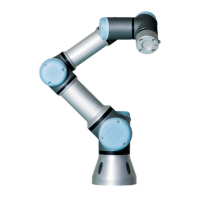
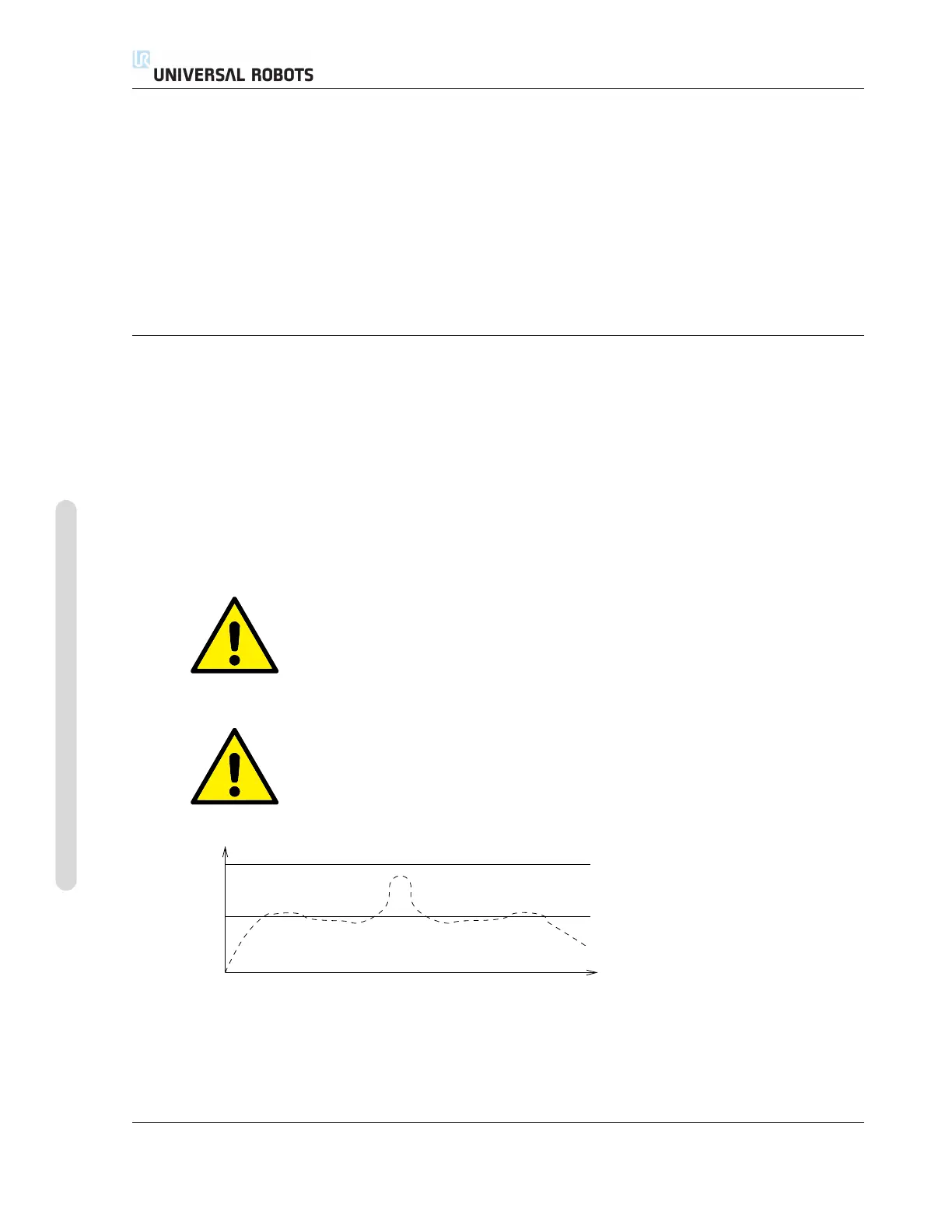